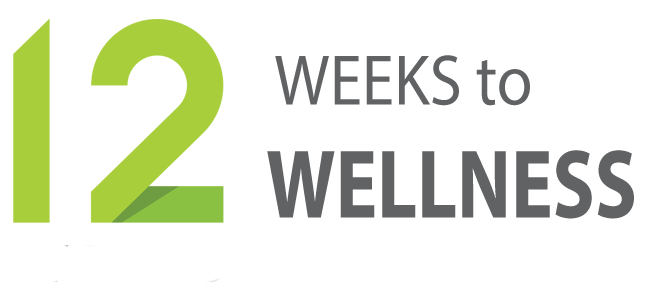
In today’s fast-paced corporate world, the health and well-being of employees have become paramount. Corporations are constantly seeking innovative ways to inspire their workforce towards healthier lifestyles and improved well-being. The health of employees directly impacts productivity, engagement, and overall company performance. Recognizing this, many organizations are placing a stronger emphasis on wellness initiatives, aiming to create a work environment that supports both the physical and mental health of their teams.
The Role of Health and Wellness Webinars in Corporate Settings
Health and wellness webinars offer a unique platform for corporations to communicate the importance of health and well-being directly to their employees. These sessions are designed to be engaging and informative, covering a wide range of topics from nutrition and exercise to mental health and stress management. By providing expert insights and practical advice, these webinars can play a crucial role in motivating employees to take proactive steps towards improving their health.
What Health and Wellness Webinars Can Do
1. Provide Accessible Education and Awareness:
Webinars make wellness education easily accessible to all employees, regardless of location. This format allows companies to deliver consistent messages about health and wellness across their entire workforce, creating a shared understanding of the importance of these topics. Whether employees are in the office, working remotely, or on the go, they can access the same high-quality content, ensuring no one is left out.
2. Promote Engagement and Interaction:
Interactive features like live Q&A sessions, polls, and chat functions can turn webinars into lively, engaging experiences. Employees are not merely passive listeners; they have the opportunity to engage directly with experts, ask questions, and share their thoughts. This interaction makes the content more relevant and memorable, encouraging employees to reflect on their own health habits and consider making changes.
3. Introduce and Reinforce Wellness Initiatives:
Webinars are an effective way to launch new wellness programs or reinforce existing initiatives. By regularly hosting webinars on various wellness topics, organizations can keep health and wellness at the forefront of employees’ minds. This continuous reinforcement is key to building a culture of health within the organization, where wellness becomes a natural and integral part of the work environment.
4. Provide Flexibility and Inclusivity:
One of the greatest advantages of webinars is their flexibility. Employees can participate from the comfort of their desks or homes, making it easier for them to engage with the content and incorporate the learnings into their daily lives. This convenience encourages participation and ensures that the message of health and wellness reaches a wider audience within the corporation.
5. Offer Short-Term Motivation:
Webinars can serve as immediate sources of inspiration, motivating employees to take action right after attending a session. This might involve trying out a new stress management technique, incorporating a quick exercise routine into their day, or making healthier food choices. These small steps can be the beginning of a more significant, long-term change.
What Health and Wellness Webinars Can’t Do Alone
While webinars are a powerful tool, they have limitations when it comes to sustaining long-term behavior change:
1. Sustain Long-Term Behavioral Change:
Webinars can spark interest and initiate short-term actions, but they are often not enough to sustain long-term behavioral change on their own. Long-term change requires consistent support, follow-up, and personalized intervention. This is where other wellness strategies, such as ongoing coaching and regular check-ins, come into play.
2. Address Individual Needs:
Webinars are designed for a broad audience and may not address the specific needs or challenges faced by individual employees. Wellness is a personal journey, and while webinars can provide general guidelines, they may fall short in offering tailored advice that considers an individual’s unique circumstances, health conditions, and lifestyle preferences.
3. Replace Comprehensive Wellness Programs:
Webinars should be seen as a component of a more extensive wellness program, not a standalone solution. A comprehensive wellness strategy might include one-on-one wellness coaching, personalized nutrition plans, fitness programs, mental health resources, and more. Webinars are most effective when integrated into a holistic approach that addresses all facets of employee well-being.
The Power of Combining Webinars with Wellness and Nutrition Coaching
To maximize the impact of health and wellness webinars, they should be complemented by wellness and nutrition coaching. Coaches provide personalized guidance, helping employees set realistic goals, overcome challenges, and stay accountable. They offer tailored advice that webinars can’t, addressing specific health issues, dietary needs, or stressors unique to each employee.
By integrating wellness coaching with webinars, organizations can ensure that the initial inspiration from the webinars translates into actionable steps and sustained behavioral change. Coaches can help employees apply what they learn in webinars to their daily lives, offering the personalized support and accountability necessary for long-term success.
Inspiring a Culture of Health within the Corporation
In conclusion, health and wellness webinars are more than just educational tools; they are a source of inspiration and a stepping stone towards a healthier, more vibrant workforce. By embracing these webinars, corporations can inspire their employees to prioritize their well-being, leading to lasting change and a multitude of benefits for both the individuals and the organization as a whole. However, to fully realize these benefits, webinars should be part of a comprehensive wellness strategy that includes personalized coaching and ongoing support.
Investing in employee health and wellness is investing in the future of the organization. By creating a culture that values well-being, companies not only enhance the quality of life for their employees but also pave the way for increased productivity, reduced absenteeism, and a stronger bottom line.
Contact 12 Weeks to Wellness today to learn more about our Corporate Wellness Webinars and check out our special Fall Webinar and Coaching special.
Author: Emma Carpenter
Manager of Operations and Workplace Wellness Strategist, BSC, Health Promotion
Emma has over 20 years of experience in the area of leadership and workplace health promotion and has worked with many private sector and public organizations in Canada and Europe helping them build a health promoting culture and design custom wellness solutions. Emma is passionate about designing workplace wellness solutions that help people reach their full potential by empowering them and giving them confidence and tools to make lasting lifestyle changes.
